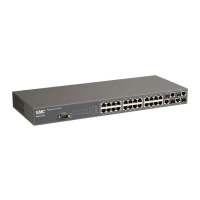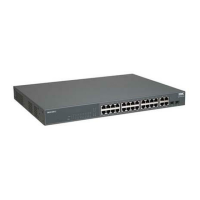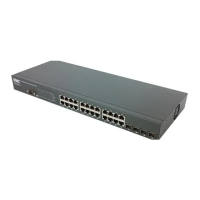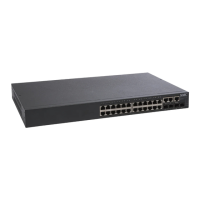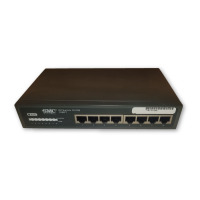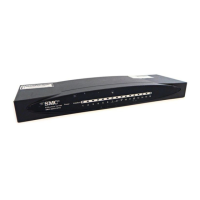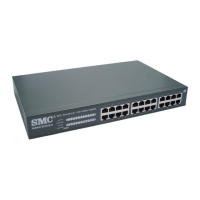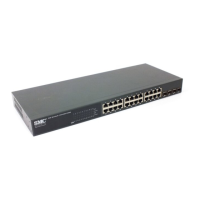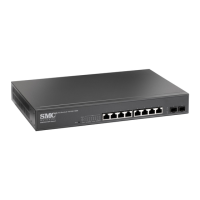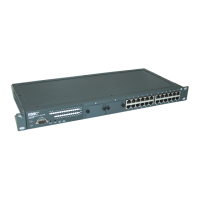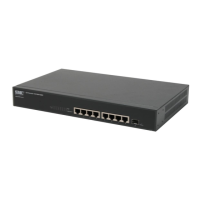CLASS
32-7
enter Policy Map Class configuration mode. And finally, use the set
and police commands to specify the match criteria, where the:
- set command classifies the service that an IP packet will receive.
- police command defines the maximum throughput, burst rate,
and the action that results from a policy violation.
• You can configure up to 16 rules per Class Map. You can also include
multiple classes in a Policy Map.
Example
This example creates a policy called “rd_policy,” uses the class command
to specify the previously defined “rd_class,” uses the set command to
classify the service that incoming packets will receive, and then uses the
police command to limit the average bandwidth to 100,000 Kbps, the
burst rate to 1522 bytes, and configure the response to drop any violating
packets.
Console(config)#policy-map rd_policy
Console(config-pmap)#class rd_class
Console(config-pmap-c)#set ip dscp 3
Console(config-pmap-c)#police 100000 1522 exceed-action drop
Console(config-pmap-c)#
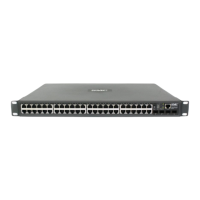
